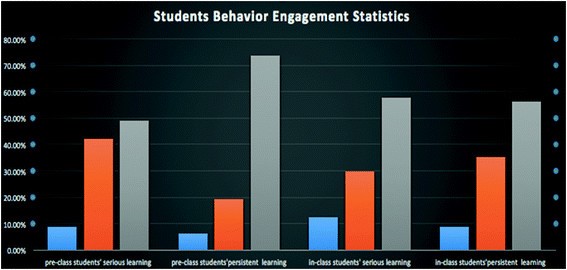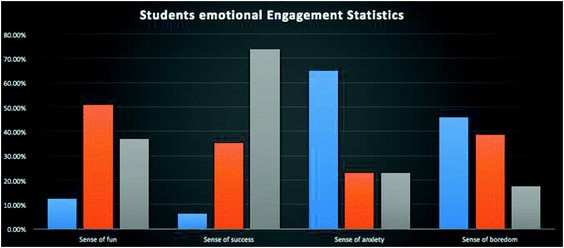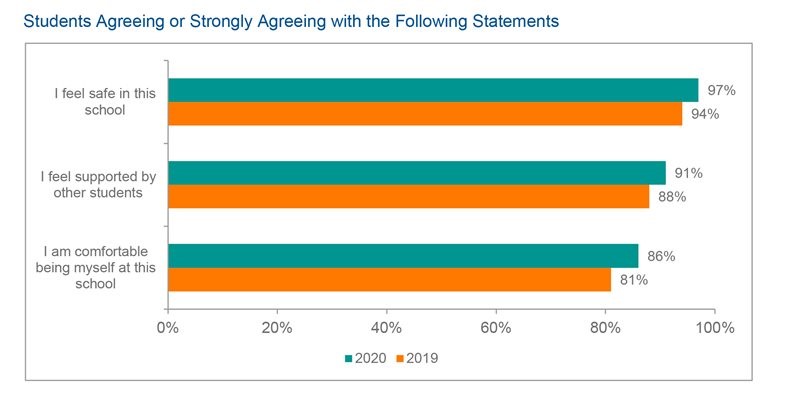Research shows that only 46% of students feel engaged in school.
While the numbers are shocking, we are all aware that instructors work tirelessly to keep their students engaged. They are constantly looking for new ways and tools to hold the maximum attention of the students. However, what pushes them away from learning? What can you do differently and what do behaviourally engaged students look like?
If you are looking for answers then worry not as we have all the insights.
What Is Student Engagement?
Student engagement refers to the degree of curiosity, attention, passion, interest, and optimism shown by students when they are being taught. Furthermore, it extends to the level of motivation students need to learn to progress in their education.

However, student engagement is not something that can be solely developed by students. Educators, school leaders, and other administrators play an equal role to engage students and governing their decision-making process.
Furthermore, according to the National Association Of Independent Schools (NAIS), student engagement is comprised of three vital parts:
- Behavioral Engagement

It is measured by the student's behavior. A behaviourally engaged student does exactly what they are supposed to within a classroom. They display behaviors associated with attention, concentration, and persistence and adhere to all the norms, rules, and regulations of an institution. Moreover, they participate in social, academic, and co-curricular activities.
- Cognitive Engagement
This involves strategy and effort used by the students while learning something. It comprises the want to understand something and the will to go beyond the required parameters to accomplish learning goals. Cognitively engaged students invest a lot of time in learning and use strategies for deep learning.
- Emotional Engagement

This reveals a student's attitude toward learning. Emotionally engaged students range from simply liking what they are doing to getting involved deeply with the knowledge and skills they are acquiring. Emotionally engaged students are focused on the nature and extent of negative and positive reactions from their classmates, teachers, or school.
How To Increase Student Engagement?
Now that we have learned about student engagement, what can be some of your strategies to keep your students engaged?
If you are looking for answers, here are four strategies.
- Nurture Relationships
Student engagement often begins with caring relationships. When they build caring and close relationships with their educators, they are fulfilling their developmental need to build a connection with others and raise a sense of belonging. These relationships are necessary and are possible both in a live and virtual setting.

Source: nais.org
A student-teacher connection inspires the student and fosters a positive environment. Moreover, students are encouraged and motivated to participate and grow. The relationship between the instructor and learner begins as early as knowing their names. So, put in your efforts to recognize them as more than just a body and have a positive and significant impact on their lives.
- Design Meaningful Work
The best teacher-student relationship is also dependent on the work they do in the classroom. If a student does not find a particular task to be challenging or stimulating, it is obvious that they won't be engaged. Thus, if you are trying to garner student engagement then design your activities in a way that seems relevant to their personal growth somehow.
Show that you value their future and hence the particular activity is worth pursuing and how it can affect their real life. Another way to keep students engaged is to personalize their tasks. Understand the interests of your students and group them together based on similar areas to avoid boredom and frustration.
- Build Autonomy
Learners searching for autonomy are as common as you searching for personal freedom while teaching. This longing often extends in a classroom and satisfying this need leads to increased student engagement. Autonomy refers to the amount of power given to a student to determine what they want to do and how they want to do it.
When students are given a choice, they experience intrinsic motivation and their effort and learning grow. When students feel empowered it fosters ownership in the learning sphere as well. Students who feel they are heard are more prone to taking responsibility and hence stay more engaged.
- Boost Competency And Self-Efficacy
Every student faces challenges in their day-to-day life. However, these challenges are not the same for everyone and most students might find it overwhelming. Thus, as educators, you want to challenge your students which will lead to growth and help them develop productively and positively.
Create challenges that enable the learners to develop the necessary skills required to complete assigned tasks successfully. This will boost self-efficacy and competence and they will develop the ability to assess their capabilities accurately. Ensure that the lessons taught are not way beyond their current knowledge to prevent hopelessness and disinterest. When learning happens easily, students are more engaged and motivated.
The Final Takeaway
While you are browsing through the tips and tricks, it is essential to understand that student engagement is malleable. This is because they respond to external forces like a classroom environment, lessons taught, etc. thus, if you want to enhance student engagement, it is imperative to understand why they are disinterested. Consider pursuing a Diploma in Educational Administration and Management to understand learner psychology and develop your own strategies effectively.









